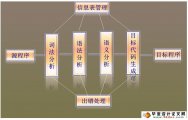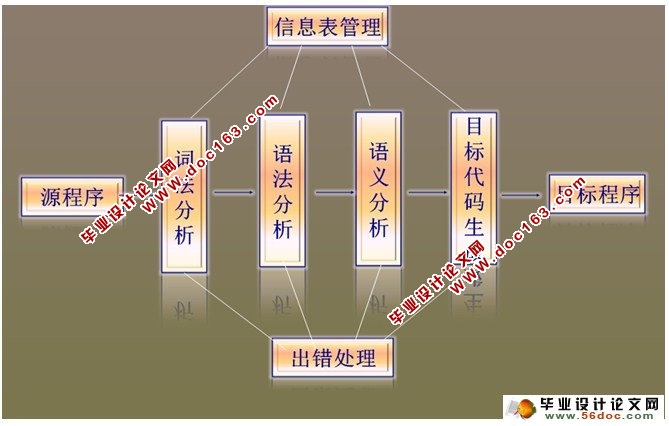C语言编译器设计与实现

资料介绍:
C语言编译器设计与实现(任务书,外文翻译,毕业论文20000字,答辩PPT)
摘 要
随着计算机的广泛应用,计算机程序设计语言也从初期的机器语言发展为汇编语言,以及现在的各种高级程序设计语言。而编译技术是计算机语言发展的支柱,也是计算机科学中发展最迅速、最成熟的一个分支,他集中体现了计算机发展的成果与精华。
其核心思想就是把同样的逻辑结构和思想从一种语言表示的程序转换为另外一种语言表示的程序。从高级语言,甚至运行与虚拟平台的高级语言,到机器语言,最终到硬件执行的物理信号,这一层层的转化,都涉及编译技术的应用。
本系统采用C++为编程语言。论文主要介绍了本课题的开发背景,所要完成的功能和开发的过程。重点的说明了系统设计的重点、设计思想、难点技术和解决方案。
关键词:编译技术,编程程序,高级语言
C language compiler design and Implementation
Abstract
With the wide application of the computer, computer programming languages are developed from the early machine language into assembly language , and now a variety of high-level programming language. The compiler technology is the backbone of computer language development, but also the fastest growing in computer science , a branch of the most mature , he epitomizes the essence of the computer and the fruits of development .
The core idea is the same logical structure of the program and ideas expressed in the conversion from one language to another language program represented . From the high-level language , and even running with high-level language virtual platform to machine language , and ultimately to the hardware implementation of the physical signal , the layers of transformation involves application of compiler technology .
System uses C++ as the programming language. Paper introduces the development background of the topic, the development and function to complete the process. Note the focus of systems design, design ideas, technologies and solutions difficult.
Key Words: Compiler technology,Programming procedures,High-level programming language
 [资料来源:Doc163.com]
[资料来源:Doc163.com] 
目 录
摘 要 i
Abstract ii
第一章 绪论 1
1.1 开发背景 1
1.2 开发目标和意义 1
1.2 当前编译器国内外的发展情况 2
第二章 理论基础 4
2.1 编译系统概述 4
2.1.1 什么是编译器 4
2.1.2 编译器的产生 4
2.2 编译器的结构 4
2.3 编译器的组织 6
2.3.1 编译的分遍 6
2.3.2 分遍的设计 6
2.4 编译器中的主要数据结构 7
2.5 编译程序的开发 7
2.5.1 历史与发展 7
2.5.2 开发注意事项 7
2.5.3 编译技术和软件工具 7
第三章 C编译器可行性分析及总体设计 9
3.1 可行性分析 9
3.1.1 经济可行性 9
3.1.2 技术可行性 9
3.1.3 运行可行性 9
3.1.4 时间可行性 10
3.1.5 法律可行性 10
3.2 C语言的基本描述 10
3.3 C编译器的功能 10
3.4 C编译器的程序结构 11
3.4.1 C编译器的设计模式 11
3.4.2 C编译器的文件组成 12
3.5 C编译器中的主要数据结构 12
第四章 C编译器的实现 14
4.1 词法分析阶段 14
4.1.1 概述 14
4.1.2 C词法分析程序的实现 14
4.1.3 关键字与标识符的识别 16
4.1.4 词法识别具体实现 16
4.2 语法分析阶段 18
4.2.1 概述 18
4.2.2 C语言抽象出来的文法规则 19
4.2.3 C语法分析程序的实现 22
4.3 语义分析阶段 27
4.3.1 概述 27
4.3.2 C语言的语义 27
4.3.3 C的符号表 27
4.3.4 C语义分析程序的实现 28
4.4 中间代码生成阶段 33
4.4.1 概述 33
4.5 C编译器的使用方法及测试 33
4.5.1 使用方法 33
4.5.2 测试源文件 34
4.5.3 测试词法分析 34
4.5.4 测试语义分析及中间代码生成 35
4.5.5 测试分析表文件的构造 36
参考文献 38
致谢 39
上一篇:个人保险管理系统分析与设计
下一篇:广州市广播电视台安全管理信息系统研究与实现(硕士论文)
